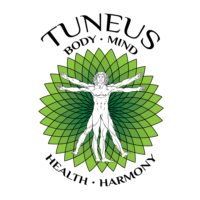
It’s in the air. Spring is just around the corner. And with that comes the familiar scent of rain mixed with lush soil. Quite often during this time of year, you’ll find the avid outdoorsmen – and women – gravitating towards nature of any kind within reach, a common process known as Shinrin-yoku.
Roughly translated to mean “forest bathing” in English, Shinrin-yoku originates in Japan, with the formal concept coined in the early 1990’s[1]. Viewed as a form of natural medicine, the basic idea behind this popular Japanese practice is to unplug from the world for a few hours by seeking out the nearest forest – ideally speaking, but dense foliage of any kind also works, for those of you living in cities – and immersing into the surrounding environment[2].
This isn’t your average hike, the key here is to tune into the five senses, using them as your guide towards navigating the greenery around you[3]. For some, it might mean stopping to look up at the branches and leaves while simultaneously burying your bare feet deep into the earth, feeling the soil crumble between your toes. Or, you might find a simple meditation practice more suitable. Maybe scouting out a comfortable place to sit cross-legged against a tree trunk, closing your eyes and breathing in the aromatic plant compounds – phytoncides, if you will – around you[4].
In fact, the very concept of Shinrin-yoku is regarded as a meditation in and of itself – a very special kind. Walking around in nature can bring your awareness back to the present moment, cultivating mindfulness in response. Combine mindfulness with sensory input, and you’ve concocted a meditation practice that bridges the gap between yourself and the natural world[5].
Why try any of this at all, you might be asking, and especially with such busy schedules at hand? Well, for several reasons actually.
Numerous research studies conducted in both Japan and the U.S. suggest that the practice of forest bathing not only helps reduce stress, but also enhances the immune system. One 2011 study found that, compared to walking in cities, walking in forests for roughly four hours generated greater reductions in blood pressure – from 141 mmHg down to 134 mmHg (for those of us under 60, it’s highly advised we try and keep our blood pressure under 140)[6].
A recent meta-analysis in the journal Environmental Research finds that people who regularly spend time in nature hold lower risk for chronic illnesses such as Coronary Heart Disease and Type II Diabetes[7]. Other studies suggest links between greenery and neurological outcomes[8]. Part of the explanation for all this is that exposure to plant-released phytoncides not only boosts activity amongst the immune system’s natural killer cells, but also increases our serotonin levels when continuously inhaled[9]. No doubt, these fragrant organic compounds are superheroes of mild depression relief – the very act of breathing in fresh, clean forest air diffused with scents of cedar and pine is enough to significantly improve one’s mood and mental clarity.
Apart from being a practical stress-reduction strategy, forest bathing on its own promotes overall well-being. From metabolic and psychological health to stronger sleep patterns and reduced inflammation, nature works wonders[10]. And now, more than ever, we need our greenery.
With more people living in cities and simultaneous anxiety levels on the rise thanks to technology and social media, most of us are currently undergoing a nature deficiency[11]. As human beings, we are biologically connected to the environment, so it’s important we maintain that connection by escaping to the forest to unwind and recharge our energy.
All this being said, come springtime when the weather starts warming up, why not take time out of your week/end to unplug from your electronic devices for a couple hours and seek out the nearest tree thicket, garden, park, or forest (of course). No complex hiking equipment necessary. In fact, maybe take off your shoes and go barefoot for a while – complimentary reflexology! Just remember to mindfully pay attention to your senses and, above all, practice being present. Sooner or later, you’ll find relaxation overcome you. The best part of this process is that it’s completely free of charge – therapy, without the need for a prescription.
Establish Shinrin-yoku as a weekly routine, and your body and mind will both thank you for the restored vitality in the long run. New year, new you. Time to go out and explore!

Donna
March 12, 2019A superb subject and a well written article. So very interesting, and I agree the The Forests always heals ones soul.